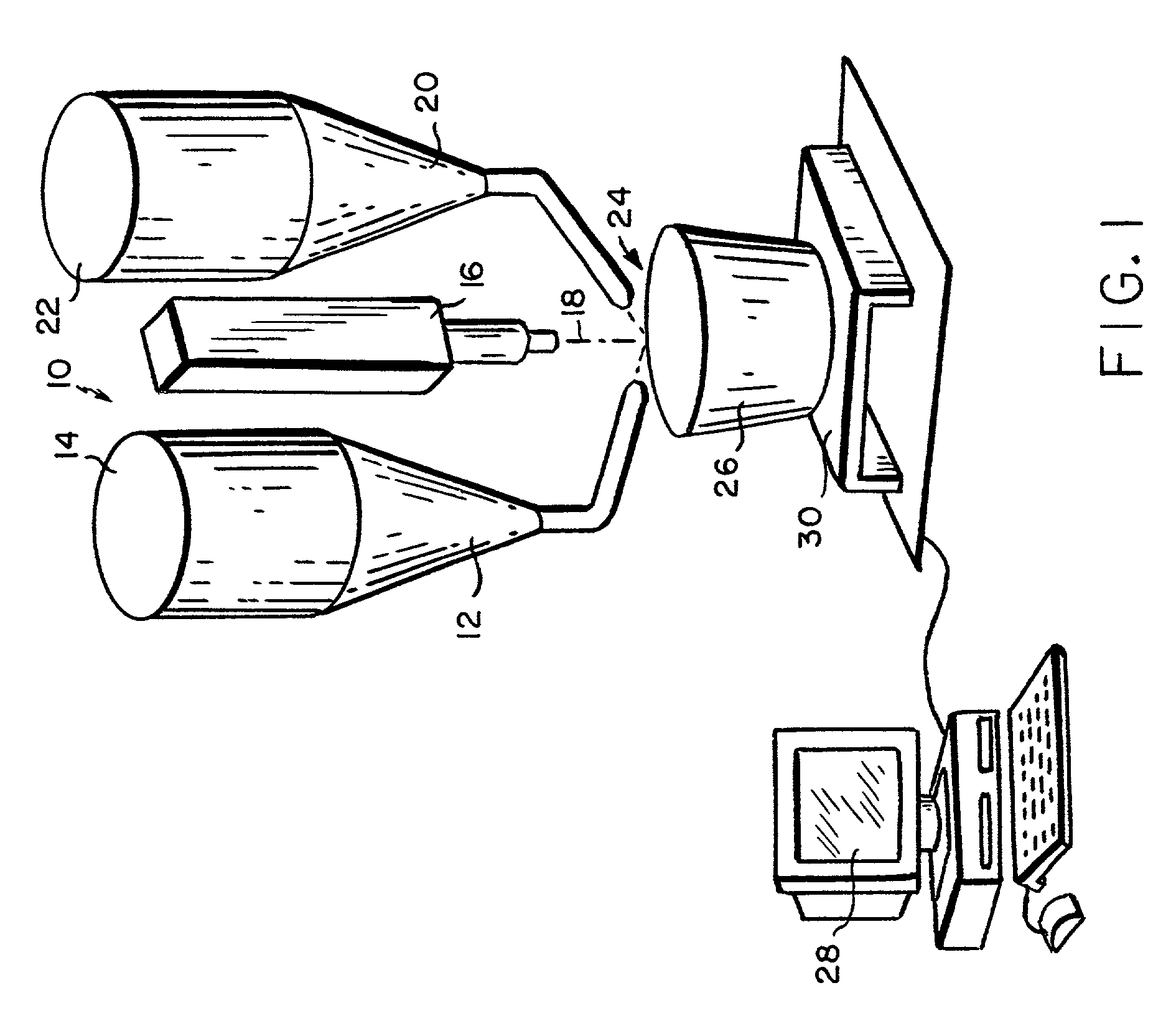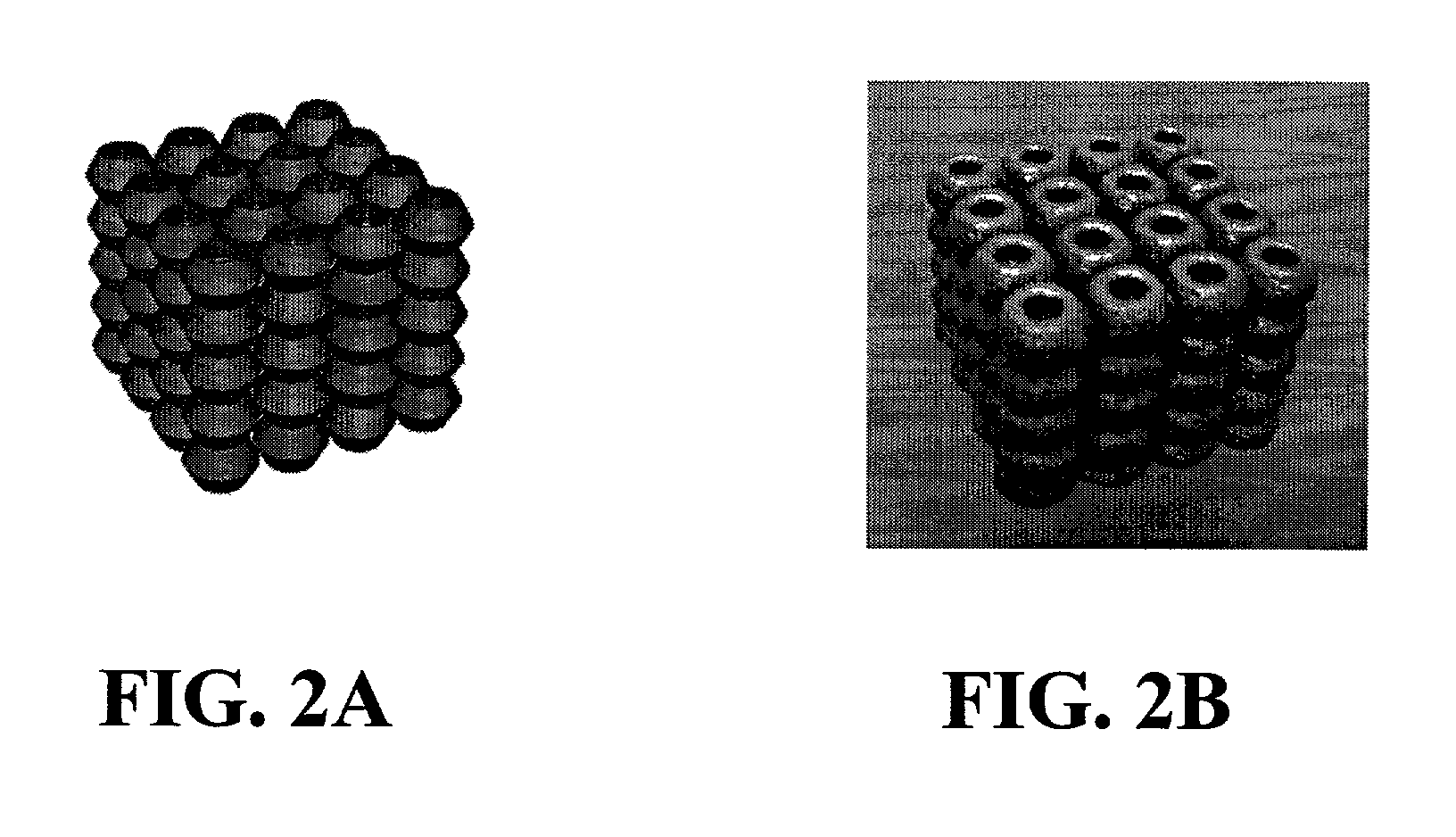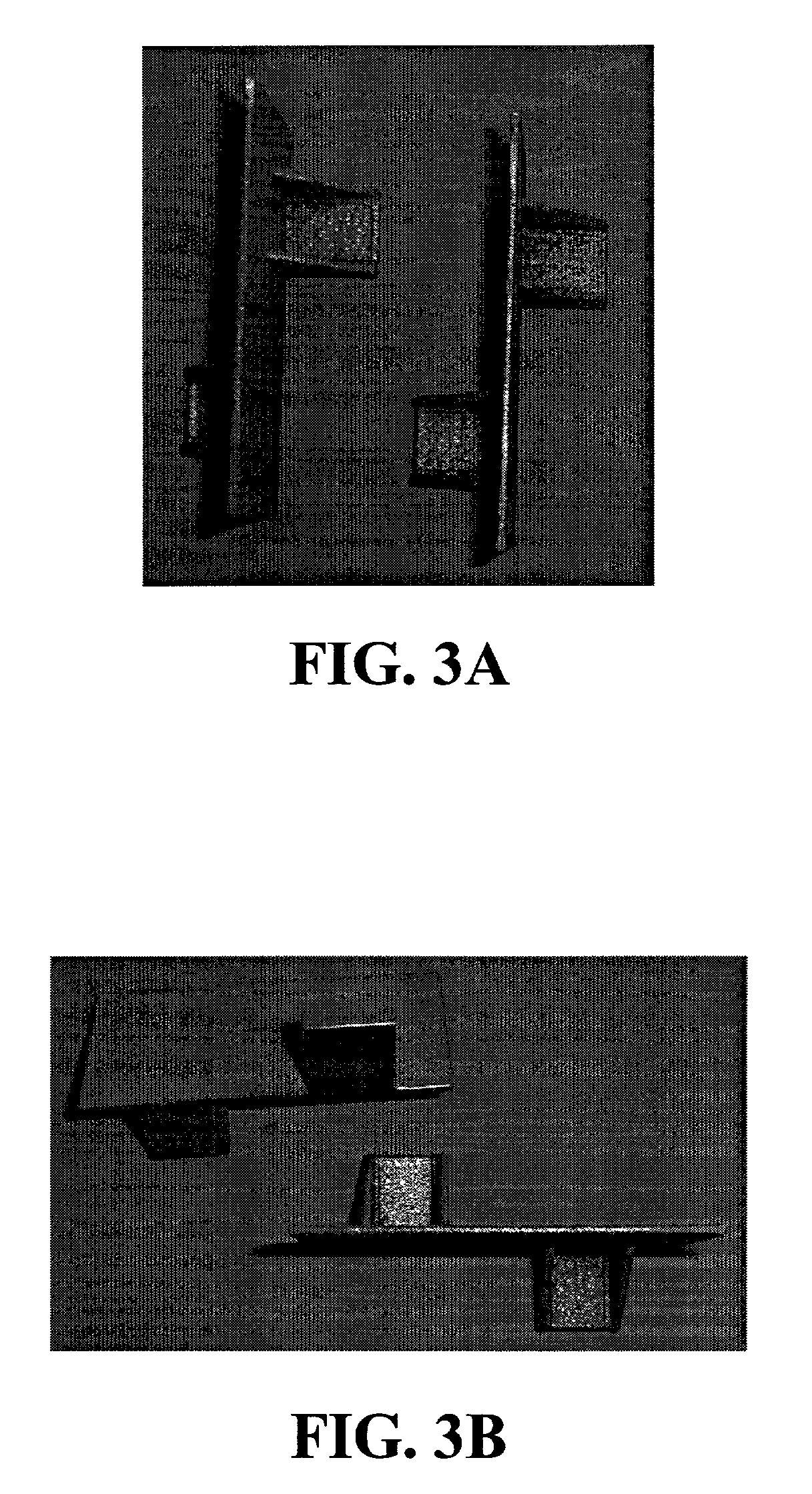Laser fabrication of discontinuously reinforced metal matrix composites
a technology of discontinuous reinforcement and metal matrix, which is applied in the direction of metal-working apparatus, metal-coating process, electrical apparatus, etc., can solve the problems of low cost, high cost of machining, and inability to produce small quantities of parts attractively, and achieve low cost
- Summary
- Abstract
- Description
- Claims
- Application Information
AI Technical Summary
Benefits of technology
Problems solved by technology
Method used
Image
Examples
Embodiment Construction
)
[0034]Structures comprising metal matrix composites having a fine structure are provided by the present invention. In preferred structures, the composites are fine grained with a substantially uniform distribution and random orientation of the reinforcing material(s). One preferred method of forming metal matrix composite structures and parts of the present invention is illustrated in FIG. 1. In this embodiment the method of the present invention is carried out using a laser fabrication apparatus 10 having a first hopper 12 containing powder 14, where the first hopper deposits the powder 14 in a feed zone 24 beneath a laser 16. Laser beam 18 is directed at the feed zone to heat and melt the powder to form a deposition in a structure or part 26. Material is added to previous depositions formed upon substrate 30 to gradually build the structure / part. The substrate may be preferably preheated before receiving depositions of the structure / part.
[0035]In a first preferred embodiment of t...
PUM
| Property | Measurement | Unit |
|---|---|---|
| Fraction | aaaaa | aaaaa |
| Fraction | aaaaa | aaaaa |
| Fraction | aaaaa | aaaaa |
Abstract
Description
Claims
Application Information
 Login to View More
Login to View More - R&D
- Intellectual Property
- Life Sciences
- Materials
- Tech Scout
- Unparalleled Data Quality
- Higher Quality Content
- 60% Fewer Hallucinations
Browse by: Latest US Patents, China's latest patents, Technical Efficacy Thesaurus, Application Domain, Technology Topic, Popular Technical Reports.
© 2025 PatSnap. All rights reserved.Legal|Privacy policy|Modern Slavery Act Transparency Statement|Sitemap|About US| Contact US: help@patsnap.com



